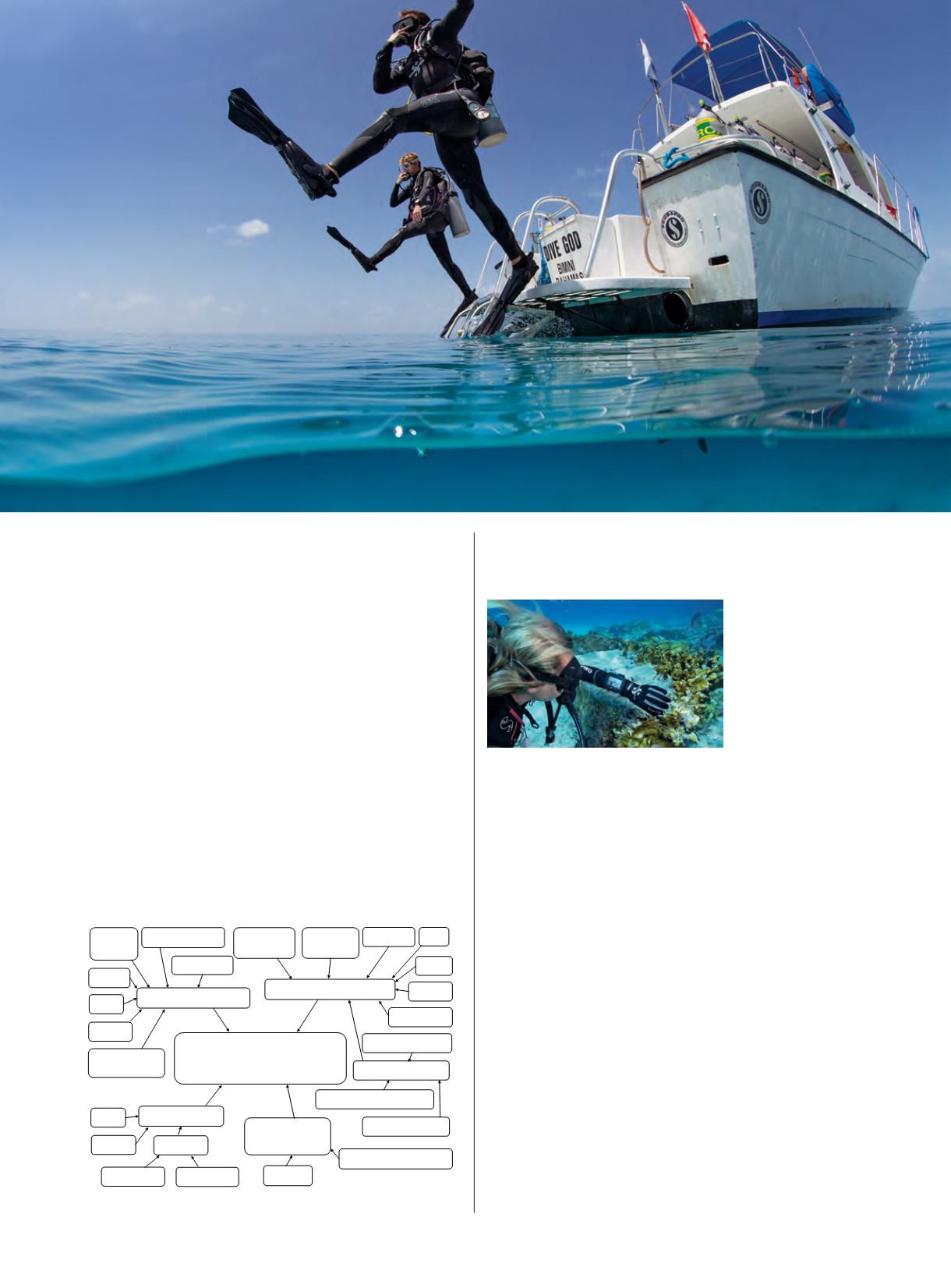

86
|
FALL 2016
F
or much of the past century a small
number of algorithms have been used
to estimate divers’ decompression
obligations. Advances in recent
decades, however, have produced an
array of mathematical models used in
personal dive computers. All current computer models
base their assessments almost exclusively on the
pressure-time profile of a dive. While this is certainly
the most important element of decompression sickness
(DCS) risk and can provide excellent guidance, many
factors influence the totality of inert gas uptake and
elimination — and ultimately decompression safety.
1
Divers can reduce their risk by thinking beyond the
current algorithms.
The variables affecting decompression stress can
be clustered into four broad categories: dive profile,
exercise profile, thermal profile and predisposition
factors (Figure 1).
DIVE PROFILE
Even for
situations
in which all
other factors
work against
decompression
safety, if the dive profile does not generate significant
decompression stress, DCS will not develop. Critical
elements of the profile include time spent at each
depth, ascent rate, stop depth(s), stop duration(s) and
breathing gas(es) used. Recent previous dives can alter
the impact of these variables. Subtler effects are created
by the water density, whether it is fresh or salt, and
the atmospheric pressure at the surface. The lower
the atmospheric pressure is at the surface, the greater
the decompression stress for a given dive. While the
greatest reduction in atmospheric pressure comes with
increasing altitude, fluctuating weather conditions also
have a minor effect.
Most algorithms used in dive computers provide
adequate protection for typical recreational exposures,
but DCS can develop even in people who dive within the
limits of decompression models. The risk results from
the complex interplay of the dive profile, thermal and
exercise states and a host of individual factors. For some,
the level of risk associated with current decompression
algorithms is acceptable. Others may desire additional
DECOMPRESSION
SAFETY
DIVE PROFILE
THERMAL
STATUS
State of
Hydration
EXERCISE
Timing Intensity
Type
Timing
Warm/Cool Intensity
Sex?
Age
Physical
Fitness
Depth
Stops
Ascent
Rate
Breathing Gas
PREDISPOSITION
Buddy
DCS Hx
Atmospheric
Pressure
Economy
Circulation
Time
Buoyancy
Biological Health
Nutrition/Drugs
Acclimatization
Genetics/Epigenetics
Repetitive
T E X T B Y N E A L W . P O L L OC K , P H . D . ; P HO T O S B Y S T E P H E N F R I N K
[
[
THE MANY FACTORS IN
DECOMPRESSION
STRESS
Figure 1. Factors affecting decompression safety
1
NEAL W. POLLOCK 2016
















